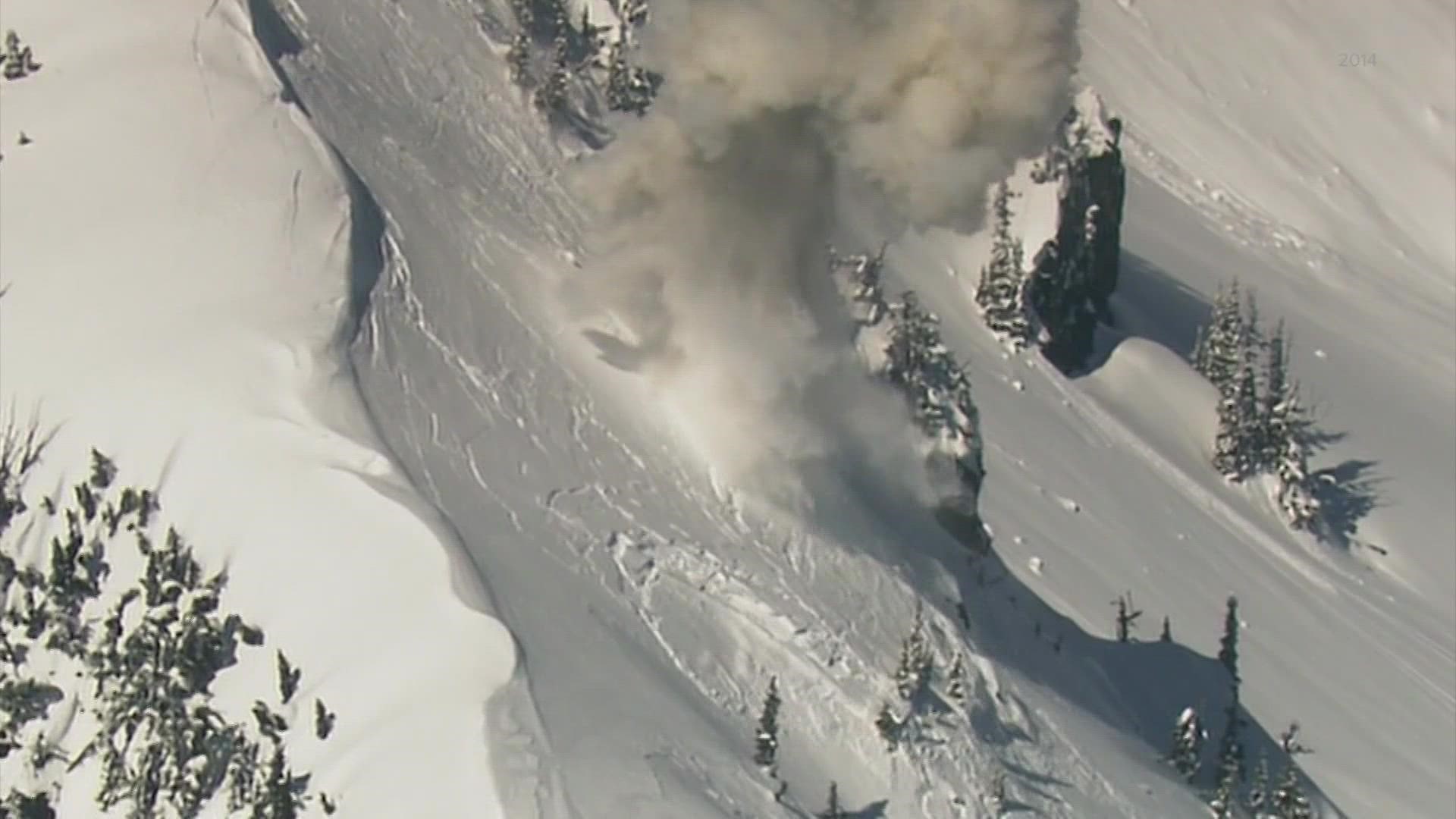SNOQUALMIE PASS, Wash. — If you're wondering why Snoqualmie, Stevens and other passes across the Cascade mountains frequently close during bad snow storms, look no further than the cliffs to either side of the roads.
A major reason the passes are closed is to allow specialized crews to remove the avalanche hazard by bringing down accumulated snow in a controlled fashion.
That is likely to be the case Wednesday night on Interstate 90 over Snoqualmie Pass, as another major storm is expected to dump as much as 2 feet, and promises to keep avalanche control teams busy.
“We have about a half dozen chutes on the west side that are frequent players. And just in the last week have started watching another six or so closely,” said John Stimberis, leader of avalanche control efforts for the Washington State Department of Transportation at Snoqualmie Pass.
Chutes are natural areas of steep terrain, usually free of trees where snow accumulates. Under certain circumstances, that snow can suddenly release and come crashing down.
Stimberis said snow totals over the past 30 days have amounted to more than 220 inches, or more than 18 feet of snow fall at Snoqualmie Pass.
The problem Wednesday night is one scenario which make avalanches especially dangerous. The last storm from early this week brought snow that was dry, fluffy and light. What’s coming is expected to be far denser and far heavier. A light layer becomes a weak layer below heavier snow, according to avalanche experts.
“Definitely a slab avalanche risk with this,” said KING 5 Meteorologist and avalanche expert Rich Marriott. And it gets potentially worse. “We’ve got a slab avalanche risk not only with the existing layers that are falling today from the new snow, but with a lot of new snow coming down, that puts a lot of stress on the layers deeper into the snow pack which can dig in deeper and take more and more of the snow down and hit the highway.”
The war to keep our highways open across the Cascade passes, including Stevens, have involved military equipment. At one point, avalanche control teams were using M60 A3 tanks on loan from the U.S. Army to precisely place exploding shells high up in the chutes to clear them out and reduce the avalanche risk. The tanks have now been returned to the military, but both Stevens and Snoqualmie have howitzers available. In clear weather they can drop explosives from helicopters.
For the most part at Snoqualmie, bags of explosives are moved along wires called trams to the top of chutes, sometimes bags are dropped from ridges above.
Yet, it’s not just about where the snow ends up or how much. What keeps avalanche control teams busy is how fast the snow comes down.
“It looks like it’s in that two inch an hour range. Which is a real challenge to deal with for the roads, and the avalanche hazard,” Stimberis said.

